“The mountains are calling and I must go.” -John Muir.
On days we can’t muddy our boots or turn over logs to peer at what’s there, we’re glad we can grab a book or check out a great film to satisfy our curiosity about the great outdoors. In celebration of Maine winging back into warm and light-filled days, these March staff picks focus on favorite spring and nature-related library materials.
Children’s Fiction and Nonfiction
Laura’s Pick
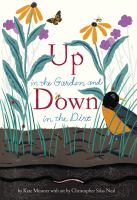 Up in the Garden and Down in the Dirt by Kate Messner with art by Christopher Silas Neal
Up in the Garden and Down in the Dirt by Kate Messner with art by Christopher Silas Neal
One of the most wonderful picture books I have encountered is Up in the Garden and Down in the Dirt by Kate Messner with art by Christopher Silas Neal. It is the perfect companion to this Real and True Spring we are currently enjoying (none of the usual Mud Season nonsense, thank goodness). It reminds me of some marvelous advice I received while taking the Portland History Docents class a few years ago: when you stop at a corner or a traffic light, look up! The tops of old buildings are beautiful and fascinating but rarely enjoyed by anyone but the birds. This book reminds us to also look down and all around us. The world is so full of beauty and intricacy, awaiting discovery, if only we know where and when to look. Though this book starts in spring, it guides you through the rest of the seasons of the year with gentle words, great sounds and continually gorgeous art. It is also excellent preparation for our upcoming Summer Reading theme: Time of Wonder, all about exploring and observing the natural world around us. The back of the book contains descriptions and illustrations that could easily be used as a guide or textbook about all the participants in the ecosystem of our gardens. Enjoy and don’t forget to look up, down and all around you!
Carrie’s Pick
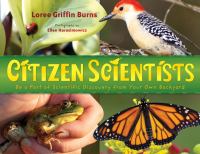 Citizen Scientists: Be A Part of Scientific Discovery From Your Own Backyard, by Loree Griffin Burns
Citizen Scientists: Be A Part of Scientific Discovery From Your Own Backyard, by Loree Griffin Burns
Spring is a time for getting outside, digging in the dirt, watching for butterflies and birds return, and looking forward to Summer! Citizen Scientists not only watch what is happening around them, they also record what they see and share their findings so we can all have a better understanding of our changing world.
Loree Griffin Burns’ book, Citizen Scientists: Be A Part of Scientific Discovery From Your Own Backyard, explains what a Citizen Scientist is and then shows you how you can be one yourself!
Using a seasonal approach, with detailed photography by Ellen Harasimowicz, the book moves you through the year with four Citizen Science projects that families can engage in in their own backyards and neighborhoods. Simple, straightforward, colorful, and accessible, this book is a great primer for any family looking to take their daily adventures and observations a step further.
Spring is here, so get out and explore! And why not share what you see and become a Citizen Scientist?
Brandie’s Pick
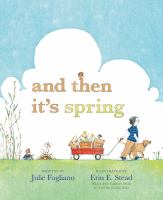 And Then It’s Spring, by Julie Fogliano, illustrated by Erin Stead
And Then It’s Spring, by Julie Fogliano, illustrated by Erin Stead
Absolutely beautiful illustrations go along with a simple story about waiting for spring. A young boy and his dog (and a few animals all around them) decide that they’ve had it with all that brown and decide to plant a garden. Then they wait and wait and wait. They all start off wearing red knit caps and scarfs, including the turtle, and by the end they are barefoot and swinging.
I will read anything that Erin Stead illustrates. In all of her books she adds tiny details in her quiet way that requires several reads to notice (the birds that are drunk on seeds, the milk container that becomes a bird house). I wanted to cut the images from the book and hang them on the wall…alas, it was a library book.
Adult Fiction
Harper’s Pick
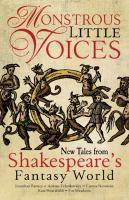 Monstrous Little Voices: New Tales from Shakespeare’s Fantasy World
Monstrous Little Voices: New Tales from Shakespeare’s Fantasy World
In this new collection of fantasy stories inspired by Shakespeare, we are given a special glimpse at the nature of the world through the eyes of some of the bard’s favorite characters: fairies. One of my personal favorites, the mischievous Puck, makes this observation about the mutable nature of humanity that we often resist: “I see no reason why anyone should define themselves by a single flesh alone, when such seemings are always subject to alteration. As well to say a grown man is unnatural for cultivating the beard he lacked at birth as to call you anything ruder than your name for desiring what you weren’t born with. Why should one change be called natural, and the other not? Crowns and shoes don’t grow on trees, and yet we alter ourselves with the wearing of them.” To believe in our own changeability in this way is an inspiring thought, especially in spring when we can see the rest of the world beginning to change around us.
Wendy N’s Pick
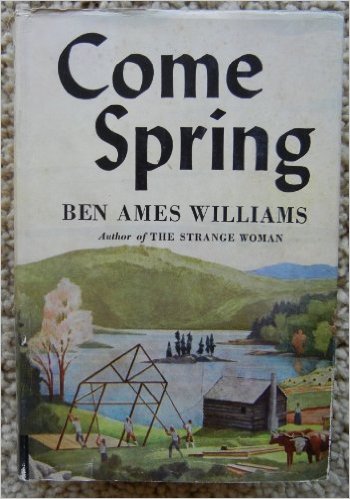 Come Spring by Ben Ames Williams
Come Spring by Ben Ames Williams
This is an older book which was forced on me by my mother when I was 17…I would like it, she said… well, she was wrong. I loved it. And I continue to love it, visiting with the Robbins family every couple of years since then. In the words of the author, this is “the story of the founding of a small Maine town, by ordinary people, in what was then an ordinary way.” It is the tale of Sterlingtown, now known as Union, Maine, in the 1700’s. It is the story of the land and its peoples, of births and deaths, of hunger and feasts, of plantings and wars, of love and strength. It is a book that speaks to you and stays with you and lets you know that “We’ll be fine, come spring.”
Film
Patti’s Picks
I would recommend any dvd that features David Attenborough. He’ll go anywhere, do anything to uncover the most interesting facts about life on this planet.
Favorite Attenborough quote, from The Secret Life of Birds: “I’m standing in a cave in Venezuela…”
Adult Nonfiction
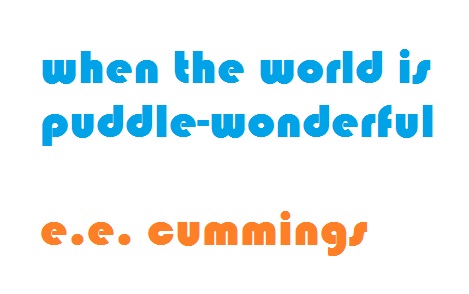
Ellen’s Pick
e.e.cummings’ poem “In Just…” has always been a favorite of mine, evoking as it does the childish delight of splashing in puddles (instead of cursing mud season)! You can read the poem at The Poetry Foundation here or check it out in cummings’ Complete Poems at PPL.
Jerri’s Pick
 A book I’ve borrowed time and again from the library is Anna Botsford Comstock’s Handbook of Nature Study. PPL owns the twenty –third edition, published in 1935. It is still in print – the most recent edition being 2010!
A book I’ve borrowed time and again from the library is Anna Botsford Comstock’s Handbook of Nature Study. PPL owns the twenty –third edition, published in 1935. It is still in print – the most recent edition being 2010!
Ann Botsford Comstock was a pioneer in nature education. She was the first female professor at Cornell University (1899) and wrote this book in 1911 to promote & inform teachers about the outdoors. An advocate teaching children the skills of observation and making the outdoors fun, her book is certainly of value (and beauty) 105 years later!
Emily’s Pick
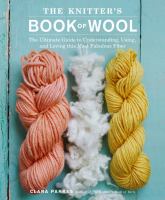 The Knitter’s Book of Wool, by Clara Parkes
The Knitter’s Book of Wool, by Clara Parkes
Do you remember the episode of Sherlock where Mycroft and Sherlock made deductions about a hat? Sherlock says that alpaca fiber and Icelandic sheep wool are very similar. Guess what? He’s wrong.*
Full of passion for the wide variety of magical creatures who turn grass into fiber, Parkes’ amazing book is both delightful and accessible for artists of all fibrous persuasions. If you’ve ever felt like a kid looking from the outside in to a candy store when terms like “Icelandic,” “BFL,” or “Corregidale” come up, or had the desire to prove Sherlock wrong about the marvelous (but very different) alpaca fiber and Icelandic wool, this is the book for you. Parkes will hold your hand through the hairiest of fiber festivals this Spring, explaining the nuances of kink, microns, and why a particular skein might be perfect for that one pattern you’ve saved and coveted….
And hey, who doesn’t love showing up a megalomaniac before breakfast while also helping protect nature by saving rare artisanal sheep with our discerning purchasing power?
*While your intrepid writer is underwhelmed by his knowledge of fiber, she is quite impressed by Cumberbatch’s learning to play the violin for this role.
Lisa’s Pick
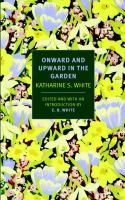
Onward and Upward in the Garden, by Katherine S. White, edited by E.B. White
A compilation of columns Katherine White wrote during her years as Fiction Editor of the New Yorker. One of the best stories White shares is when she compares the style of different seed catalogs—many of which I still get today.
Sonya’s Pick
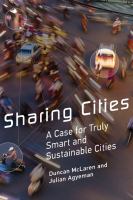 Spring and nature obviously bring to mind themes of sustainability. This month I would like to recommend Sharing Cities: A Case for Truly Smart and Sustainable Cities(Urban and Industrial Environments) by Duncan McLaren and Julian Agyeman, a title from the Library’s Choose Civility collection. This title is a deep and thoughtful guide to how the principles of the sharing economy (think AirBnB or Uber) will affect the spaces in which we live, work, and play. It was named one of the “Top 20 for 2015” by Nature magazine’s “Books and Arts” blog: “In Sharing Cities, environmental consultant Duncan McLaren and urban-policy scholar Julian Agyeman lay out, with impressive depth, clarity and wisdom, a comprehensive prescription for a sharing paradigm….bottom-up ventures that are digital or based in communities, rather than commercial.”
Spring and nature obviously bring to mind themes of sustainability. This month I would like to recommend Sharing Cities: A Case for Truly Smart and Sustainable Cities(Urban and Industrial Environments) by Duncan McLaren and Julian Agyeman, a title from the Library’s Choose Civility collection. This title is a deep and thoughtful guide to how the principles of the sharing economy (think AirBnB or Uber) will affect the spaces in which we live, work, and play. It was named one of the “Top 20 for 2015” by Nature magazine’s “Books and Arts” blog: “In Sharing Cities, environmental consultant Duncan McLaren and urban-policy scholar Julian Agyeman lay out, with impressive depth, clarity and wisdom, a comprehensive prescription for a sharing paradigm….bottom-up ventures that are digital or based in communities, rather than commercial.”
Elizabeth’s Pick
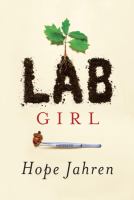 Lab Girl, by Hope Jahren (out in April 2016)
Lab Girl, by Hope Jahren (out in April 2016)
Strict science is tough for me. As a student, gently confounded by textbooks, equations, and formulas, I felt at home and happy in the writing of nature’s free-wheeling investigative reporters: Annie Dillard, Gretel Ehrlich, or Terry Tempest Williams. Now I’m apt to pick up any book with any thoughtful human mulling over any bird, bud, bug, beast, or melting ‘berg, and this winter I was glad to get a galley copy of Lab Girl.
Geochemist and geobiologist Hope Jahren’s tales of her work with trees, flowers, seeds, and soil (and her adventures with lab partner and dear friend, Bill Hagopian) cheerily greened up my winter world. Jahren’s writing is frank, humorous, and smart. She’s honest about the challenges that she’s faced as a female scientist, and she continues to write about those challenges in her field in other venues, most recently in The New York Times.
The arc of Jahren’s own story is woven through with brief, meditative chapters that explore specific ideas about plant life. A curiosity-provoker, the book made me search for photographs of a tree at a specific intersection of two roads in Hawaii, reflect on the chemicals that flood our brains, wonder over a millions-of-years-old fossil forest buried in Canada (how did the forest, every year, survive three months of darkness?), and muse on how symbiotic relationships between trees and fungi may be like…my own relationships. Along the way, we also get a proper exploding beaker, the mystery of an opal at the center of a hackberry seed, and a love of science that is honed by years of Hope Jahren’s tenacity, individuality, wisdom, and profound care.
Jim’s Picks
Desert Solitaire by Edward Abbey and Ravens in Winter by Bernd Heinrich
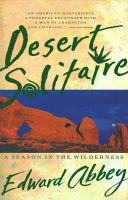
Edward Abbey’s Desert Solitaire remains THE book on the experience of living in the American Southwestern desert (in my opinion). If I’m suffering the midwinter new England blahs, I can always count on Desert Solitaire to take me virtually there.
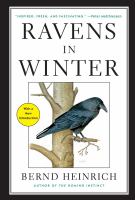
I always think Ravens in Winter was the book that got people to take a closer look at this clever, funny bird. All of Bernd Heinrich’s books are wonderfully written; you can have a tendency to forget he’s feeding you science.
Thaddeus’ Pick
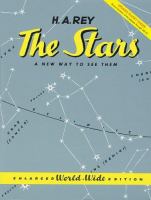 My book for Nature month is The Stars, A New Way to See Them by Curious George author H.A. Rey, and, naturally (pun intended) comes with an anecdote. When I was a wee lad, I was obsessed with the stars and constellations. I had a glow-in-the-dark star chart on the ceiling over my bed; I had myriad books and movies about astronomy, and I had this book: a wonderfully illustrated guide to the heavens.
My book for Nature month is The Stars, A New Way to See Them by Curious George author H.A. Rey, and, naturally (pun intended) comes with an anecdote. When I was a wee lad, I was obsessed with the stars and constellations. I had a glow-in-the-dark star chart on the ceiling over my bed; I had myriad books and movies about astronomy, and I had this book: a wonderfully illustrated guide to the heavens.
However, the first night I stayed up late enough for my father to take me outside into the winter night to see the stars for real, I fell to my knees terrified. It was all just so big, Orion’s Belt and the other star shapes, when taken off the page, and it was dizzying and horrifying to a boy of barely five. I looked, truly looked, at the stars solely in books for months thereafter.
So here’s to spring, to stars, to Orion, and to H.A. Rey, for reminding us all that, while we all have so much to offer and learn and teach and love and give and lose, we are oh, so very, very small.
Thanks for reading! If you’re interested in more titles like these, click here for “Bird, Beast, and Beyond: Explorations in Nature,” a longer list of new and classic nature-related reads and resources at PPL. You can observe a snail’s life at bedside (The Sound of A Wild Snail Eating). Enjoy a closer look at animals (The Animal Dialogues). Go deep (Deep: Freediving, Renegade Science, and What the Ocean Tells Us About Ourselves). Explore nature with kids (How to Raise a Wild Child), reignite your own love (The Curious Nature Guide), or consider the stories that come out of the science on climate change, extinction, and conservation (Half-earth, Betting the Farm on a Drought, After Preservation).
posted: , by Elizabeth